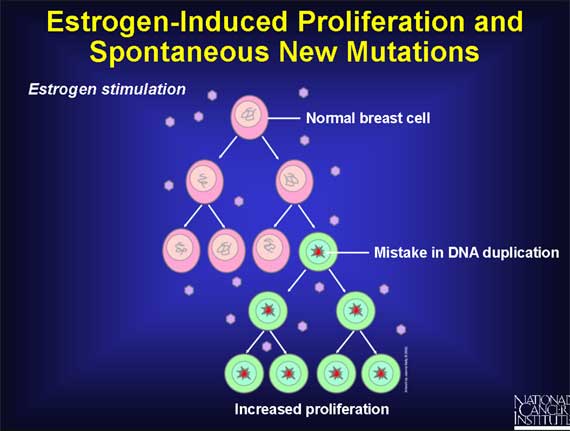|
Even in women who do not have any mutant breast cells, estrogen-induced proliferation of normal breast cells may still increase the risk of developing cancer.
The reason involves DNA. A cell must duplicate its DNA molecules prior to each cell division, thereby ensuring that the two new cells resulting from the process of cell division each receive one complete set of DNA molecules. But the process of DNA duplication occasionally makes mistakes, so the resulting DNA copies may contain a small number of errors (i.e., mutations). If one of these spontaneous mutations occurs in a gene that controls cell growth and division, it could lead to the development of cancer.
Proliferation of normal cells from exposure to estrogen creates a vulnerability to spontaneous mutations, some of which might represent a first step on the pathway to cancer.

< Previous | Index | Next Slide > |